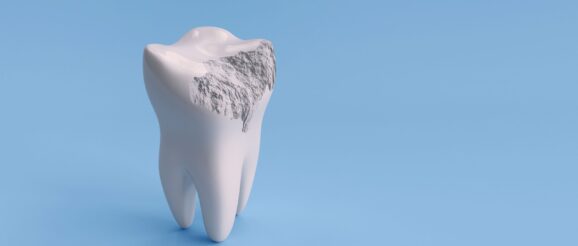Self-Healing Composite in Dentistry: A Promising Innovation

Self-Healing Composite in Dentistry: A Promising Innovation
Are you tired of having to replace your dental restorations frequently? Self-healing composites may be the solution you’ve been looking for! Self-healing dental composites (SHDC) are resin-based materials that incorporate microcapsules or vascular networks filled with a healing agent. When a crack or damage occurs, the healing agent is released and reacts with a catalyst to form a new bond, restoring the material’s mechanical properties.Recent studies have shown that SHDCs reinforced with silica nanoparticles exhibit improved mechanical properties, such as higher flexural strength and modulus, compared to conventional dental composites. Additionally, SHDCs have been developed that incorporate two further functional components into the conventional dental composite materials, such as a fluoride-releasing component and an antibacterial component, to improve their clinical performance.The development of SHDCs is still in its early stages, and more research is needed to optimize their properties and clinical performance. However, they hold great promise for the future of dentistry, potentially reducing the need for replacement of dental restorations and improving patient outcomes.
Benefits of Self-Healing Composite in Dentistry
Using self-healing composites in dentistry has several benefits, including improved service life for dental restorations, maintaining initial fracture toughness of the restoratives, and improved mechanical properties. Recent studies have shown that self-healing dental composites have comparable or improved durability compared to traditional dental materials.
How Does Self-Healing Composite Compare to Traditional Dental Materials in Terms of Durability?
Recent studies have shown that self-healing dental composites have comparable or improved durability compared to traditional dental materials. The self-healing dental composites exhibited improved fracture toughness and fatigue crack resistance. They maintained their initial fracture toughness, which is important for the longevity of dental restorations.
Closing Thoughts
Self-healing dental composites hold great promise for the future of dentistry, potentially reducing the need for replacement of dental restorations and improving patient outcomes. As research continues, we can expect to see more advancements in this field.
— – — – — – — – — – — – — – — – — – — – — – — – — – — – — – — – — – — – — – — – — – — – — – — – — – — – —
If you found this article informative, please consider sharing it with your friends and colleagues. Together, we can spread the word about this promising innovation in dentistry and help improve oral health for everyone.
— – — – — – — – — – — – — – — – — – — – — – — – — – — – — – — – — – — – — – — – — – — – — – — – — – — – —
